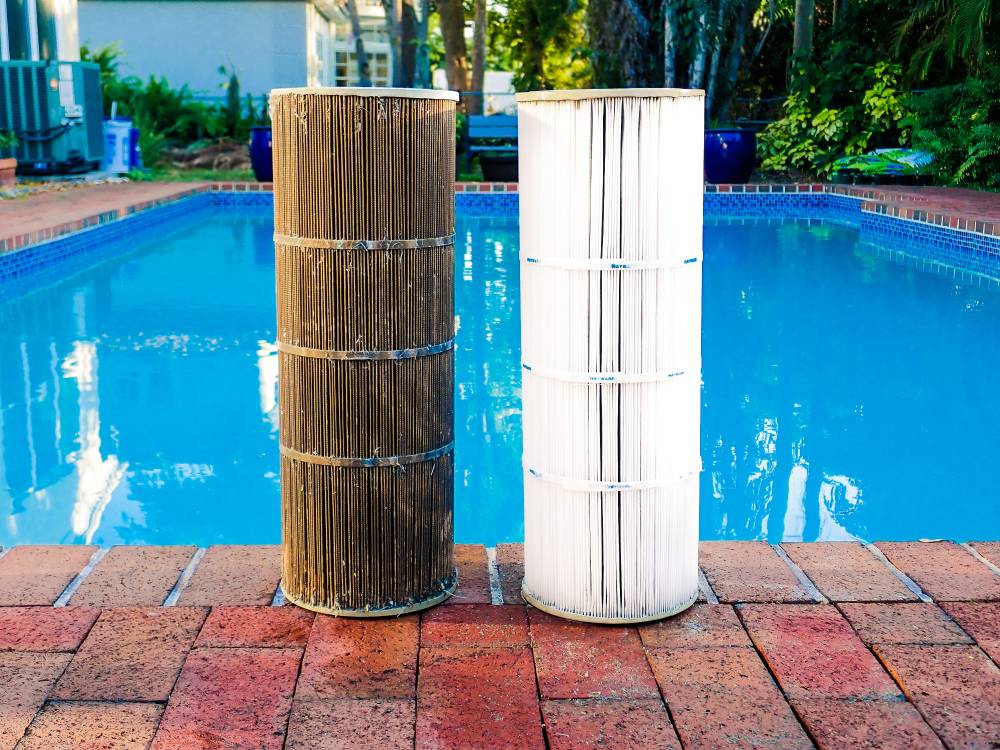Hi Everyone,
I just bought a house with a saltwater pool and luckily found TFP right in time! Have been trying to absorb all the information ever since. I dont think old owners really knew much and they relied on a pool company that treated things more like a regular chlorine pool. I have a few questions that I'm hoping someone can offer guidance on.
1. Saltwater generator is Jandy Aquapure EI 350PLG. Dealing with conflicting information. In the manufacturer manual they recommend certain levels of chemicals that differ than what we aim for here with the chlorine CYA/chart. Manufacturer says keep CYA 30-50 and FC at 1-3ppm (continuous exposure to levels above 3.9 may cause corrosion of pool metals. With TFP we are looking more at CYA 70-80 and PPM 5-6 according to the chart. Who do I follow?
2. How can I be sure the saltwater generator is working properly? At first it was having a "no flow" issue. I had pool person come consult with me, who claimed I had no chlorine and threw in some granules, and suggested I buy a new SWG from them. After DIY cleaning the SWG filter and flow switch it seems to be working now and there is no error message, but how can I be sure its not faulty?
3. If it is faulty what levels should I keep my pool at until I sort out the SWG? revert to chlorine pool numbers?
4. I've heard multiple people refer to "backwashing" and cleaning filter. I could not figure out what backwashing refers to or how to do it. Anyone care to enlighten?
FYI here are the numbers from first TF test kits:
FC 2.5ppm
CC 0
pH 7.8
CYA 45
TA 80
CH 225
Salt 2600
For my first additions, I added enough salt to reach 4000ppm (per manufacturer) and some chlorine to reach 6ppm. Let hope thats off to a good start!
Any suggestions welcome!
I just bought a house with a saltwater pool and luckily found TFP right in time! Have been trying to absorb all the information ever since. I dont think old owners really knew much and they relied on a pool company that treated things more like a regular chlorine pool. I have a few questions that I'm hoping someone can offer guidance on.
1. Saltwater generator is Jandy Aquapure EI 350PLG. Dealing with conflicting information. In the manufacturer manual they recommend certain levels of chemicals that differ than what we aim for here with the chlorine CYA/chart. Manufacturer says keep CYA 30-50 and FC at 1-3ppm (continuous exposure to levels above 3.9 may cause corrosion of pool metals. With TFP we are looking more at CYA 70-80 and PPM 5-6 according to the chart. Who do I follow?
2. How can I be sure the saltwater generator is working properly? At first it was having a "no flow" issue. I had pool person come consult with me, who claimed I had no chlorine and threw in some granules, and suggested I buy a new SWG from them. After DIY cleaning the SWG filter and flow switch it seems to be working now and there is no error message, but how can I be sure its not faulty?
3. If it is faulty what levels should I keep my pool at until I sort out the SWG? revert to chlorine pool numbers?
4. I've heard multiple people refer to "backwashing" and cleaning filter. I could not figure out what backwashing refers to or how to do it. Anyone care to enlighten?
FYI here are the numbers from first TF test kits:
FC 2.5ppm
CC 0
pH 7.8
CYA 45
TA 80
CH 225
Salt 2600
For my first additions, I added enough salt to reach 4000ppm (per manufacturer) and some chlorine to reach 6ppm. Let hope thats off to a good start!
Any suggestions welcome!


 Or should I say "Hafa Adai "!
Or should I say "Hafa Adai "! 